The best dash cams of 2019
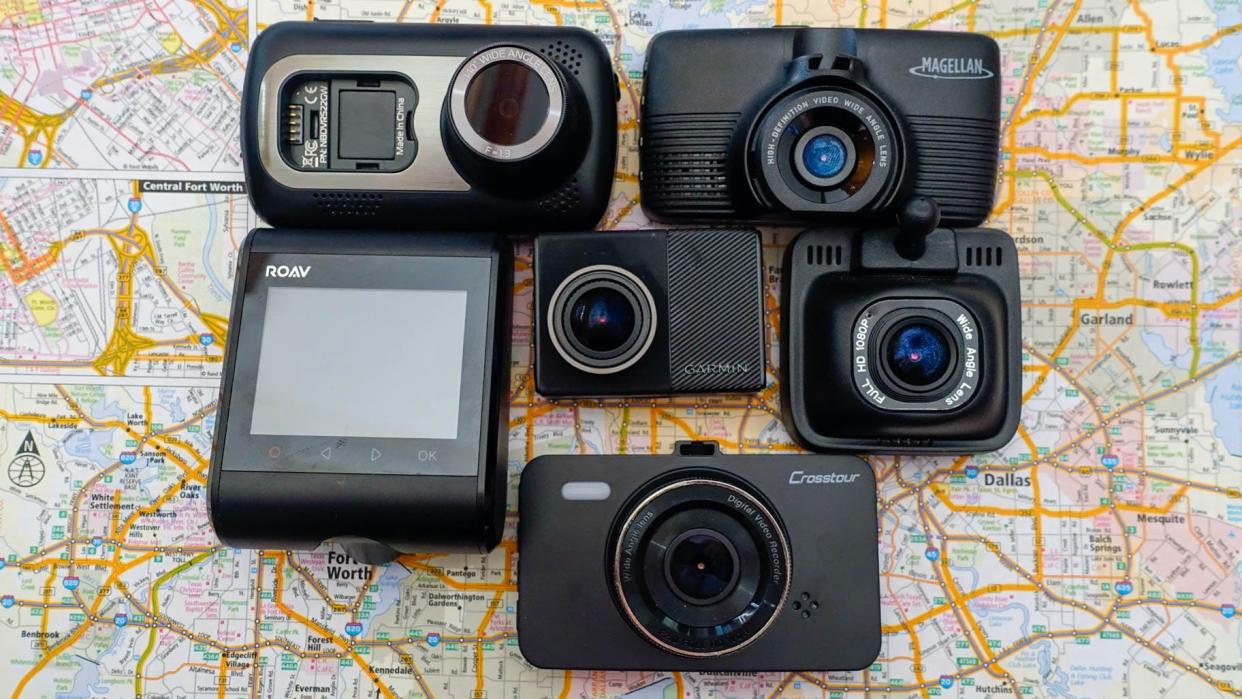
— Our editors review and recommend products to help you buy the stuff you need. If you make a purchase by clicking one of our links, we may earn a small share of the revenue. However, our picks and opinions are independent from USA TODAY’s newsroom and any business incentives.
There’s a lot of great reasons to install a dash cam in your vehicle: providing video evidence of a car accident, bearing witness to your ride getting backed into or doored in a busy parking lot, or snagging footage of your next cross-country road trip, to name a few. After weeks of research and driving 2,230 miles from the Mexican border to Calgary, Canada—recording dash cam footage all along the way—we can tell you that the best dash cam is the Garmin 65W (available at Amazon for $189.99). It’s a feature-packed, easy-to-use device that provided us with high resolution, wide-angle footage of our journey and offers more useful features than any driver could ever hope for.
That said, the Garmin 65W is pretty expensive. If you’re interested in a basic dash cam that’ll capture footage adequate for insurance reporting purposes, you’ll want to consider the inexpensive CrossTour CR300 (available at Amazon for $37.99).
1. Best Overall: Garmin Dash Cam 65W
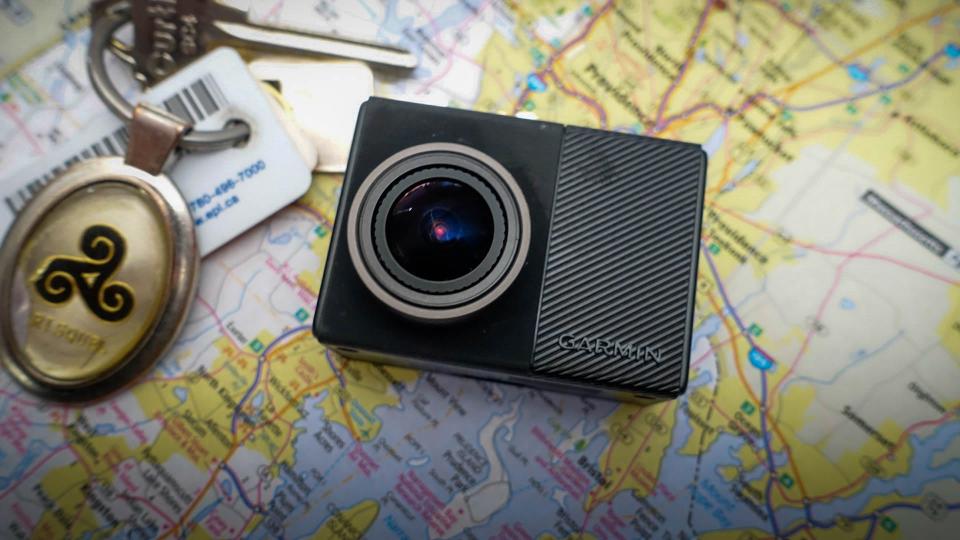
Were you to sum up what makes the Garmin Dash Cam 65W such a great device, it would be competency and scalability. The 180-degree field of view afforded by its wide-angle lens and its capacity to capture beautifully clear 1080p video footage at a smooth 30 frames per second makes it a fine choice for anyone looking to secure time-and-GPS-location-stamped footage to back up an insurance claim, help themselves to get out of a traffic ticket, or capture all of the beautiful moments of a cross country road trip.
When compared against the photographic hardware now jammed into smartphones, the Garmin's 2.1-megapixel camera might not sound like much. But we found the footage that it captured during the day, at night, or even in the middle of a freak rainstorm, to be consistently viewable. It’s even capable of taking still photos. In order to ensure constant recording as you drive, Garmin designed their dash cam to automatically record over the oldest footage stored on its included 8GB microSD card (if you want to keep a record of your entire trip, the 65W can accept higher capacity microSD cards, up to 64GB in size). Recording over older footage, in this fashion, ensures that your camera will always has space in its memory to record an important incident. That said, if the Garmin 65W’s accelerometer detects what it perceives as a crash or the sudden deceleration of your vehicle, loop recording will stop, and instead save the current, last and next recordings that it captures, in order to ensure that footage of a potential incident is secured. Footage can be reviewed either on the 65W’s three-inch color display, using Garmin’s free VIRB smartphone app, or by shuttling the video files off of the 65W’s memory card to your computer.
The Garmin 65W comes packing the best user interface of any of the devices we tested. Four analog buttons run up the right-hand side of the device, allowing you to navigate the various function menus and options via a series of on-screen prompts. Want to keep both hands on the wheel? No problem: many of the camera’s functions can be controlled with your voice. I spouted requests for the Garmin to take photos, start a time-lapse video of our drive or to start recording audio of my wife and I bantering back and forth at each other, I was pleasantly surprised to find that my commands were acted upon, without error.
This dash camera comes packed with a number of desirable options that can augment your daily commute or a cross country trip. A driver alertness alarm can be set on the 65W to occasionally make sure that you’re not drifting off behind the wheel on long treks. Collision avoidance and lane departure alarms will help you to keep on top of what the drivers sharing the road with you are doing. My favorite feature of the bunch is Garmin’s ‘Go’ alert: when stopped at a red light, the camera will notify you, via audio, that the traffic in front of you is on the move again. For those who prefer to drive distraction-free, all of these perks can also be switched off, leaving the 65W to act as a silent co-pilot on your journeys.
The camera’s design also lends itself to providing you with distraction-free wheel-time as well: It takes up so little space on your windshield that you’re bound to forget that it's even there. The Garmin 65W comes with a ball and socket mounting arm that mates to your windshield with a magnet-and-sticker mount. Two mounts are included, making it easy to switch out the Garmin 65W between two different vehicles. During testing, we found that, through five days of highway driving and hours of wheeling through backroads, the camera didn’t budge from where we pointed it.
The Garmin 65W can be powered via USB or a 12-volt car charger (included with the camera). Even when disconnected from a power source, Garmin’s got your back: The 65W comes packing a battery backup that can provide the device with 30 minutes of power.
Get the Garmin Dash Cam 65W from Amazon for $189.99
2. Best Value: Crosstour CR300
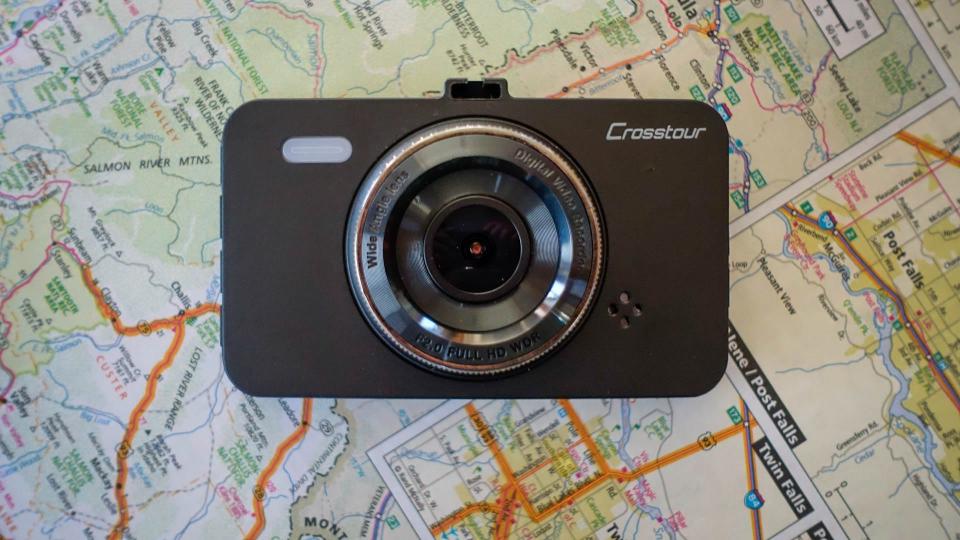
The CrossTour CR300 lacks the bells and whistles of many of the other dash cams we tested, but for the money, you won’t find a more dependable device. Unlike our best overall pick, the CR300 attaches to your windshield with a suction cup, making it easy to stow away or move to a different vehicle. During a week’s worth of testing, the suction cup only failed once when I went to push one of the camera’s physical buttons to change a setting. The ball-and-socket assembly that attaches the CR300 to its suction cup mount proved tight enough that I didn’t have to adjust it, even after days of subjecting it to near-constant road vibration.
While the CR300’s 1080p video quality can’t match the visual fidelity of the footage captured by the Garmin 65W, video captured during the day proved clear enough to use for insurance purposes. Despite not being nearly as crisp when shooting in low light conditions, I could still see everything within range of my ERV’s headlights with very few digital artifacts in darker areas of the recording. In other words, what it continuously records is likely good enough, for most people. You should know that the plastic housing on this camera feels flimsy: I’m concerned that it could easily be damaged if it was dropped the wrong way. However, provided you make sure to check its suction cup from time to time and treat it gingerly when pushing any of its buttons, you should be OK.
And hey, if it does break, it’s inexpensive enough that purchasing another one is no big deal.
Get the Crosstour CR300 from Amazon for $37.99
3. Nextbase 522GW
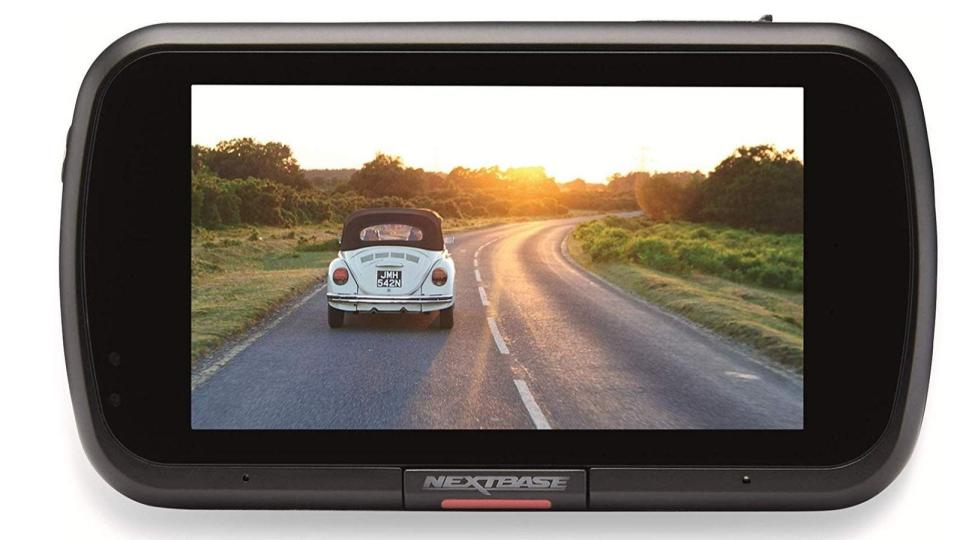
I have a lot of kind things to say about the Nextbase 522GW dash cam. It’s a well-made, handsome looking piece of hardware. Its suction cup mount adhered to our windshield and kept the camera in place throughout our five-day journey north. As with the Garmin 65W, I found that I didn’t have to adjust its orientation to compensate for road vibration. The wide-angle 1440p HD/30fps that the 522GW shot looked great (as full HD should). The 522GW doesn’t offer the same area of coverage as the Garmin 65W does. However, what this dash cam did capture was recorded in fabulous detail. It could be a great choice, not only for keeping a record of your no doubt careful, conscientious driving habits, but also for anyone interested in logging their travels for use on YouTube or a travel blog.
Unfortunately, there were a number of problems with this device that kept me from giving it top marks. For starters, for a dash cam it’s huge: about the size of a compact point-and-shoot camera. The more real estate taken up by anything on your windshield, the less of the road in front of you you’re bound to see while driving. The Garmin 65W is significantly smaller and more capable. While this device’s generously sized display was crisp and easy on the eyes, I found that its touch interface wasn’t always responsive. On several occasions, I found myself stabbing at the 522GW’s screen a number of times in order to get it to carry out a command. This frustration was piled on top of the fact that the camera’s user interface isn’t as user-friendly as I’d like it to have been. While I eventually learned my way around, I’d recommend that buyers of this dash cam spend some time playing with it before they mount it in their vehicle. Nextbase’s iOS app (also available for Android) felt just as unintuitive to use as its on-device counterpart—when I was able to get it to connect to the camera at all. While trying to link the app to the 522GW via Wi-Fi, I was repeatedly rewarded with connection errors. This dash cam comes equipped with parking mode, which captures any physical movement near your car while parked.
Get the Nextbase 522GW from BestBuy for $209.99
4. Anker Roav DashCam S1
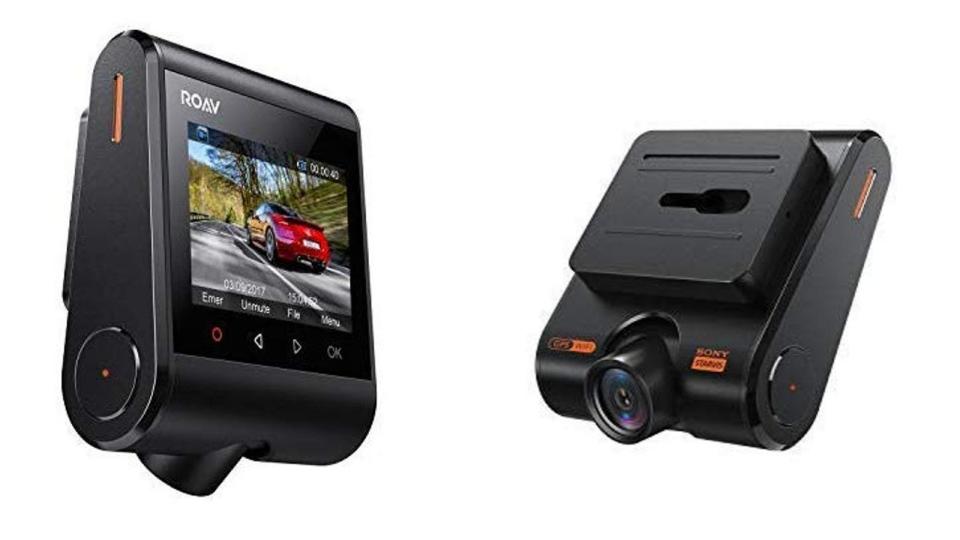
I loved the design of this feature-packed, high-resolution camera when I first unboxed it. Unlike the other cameras in this roundup, which dangle from a mount attached to your windshield, the ROAV’s sleek, flat body hugs up flush against your vehicle’s windshield glass. It looks great! Sadly, I quickly discovered that the design has a serious flaw: while the camera’s lens can be tilted up or down, the ROAV’s design doesn’t allow for side-to-side articulation. This means that once the dash cam’s backplate is fixed to your windshield, what you see is what you get. If it’s crooked or your car isn’t framed quite to your liking, too bad. The camera does come with two mounting plates, so you could have a second chance at lining it up correctly—provided you’re not planning on using the camera in more than one vehicle. There is an upside to this design, however: During testing, I never had to worry about the ROAV moving due to road vibration.
I found that the ROAV’s capacitive touch controls were hard to landmark and use unless I was giving the device my undivided attention. However, despite an initially rocky setup period, Anker’s companion iOS app for reviewing your ROAV camera’s footage is well designed and a pleasure to use.
Get the Anker Roav DashCam S1 from Amazon for $95.99
5. Magellan MiVue 420
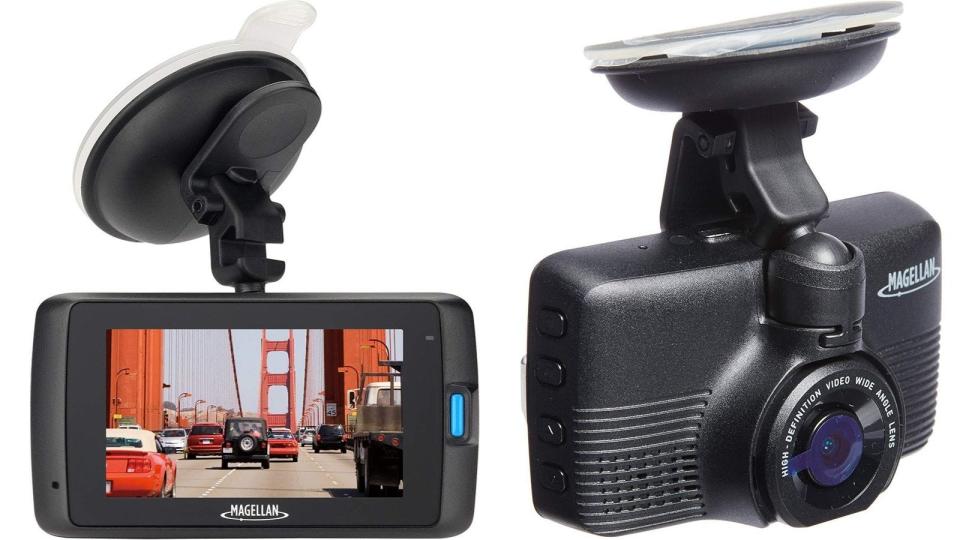
For years, Magellan was one of the biggest names of in-car navigation. While the company has largely shifted its focus to providing navigation and built-in GPS-tracking hardware for commercial transport vehicles, they still offer a few devices aimed at general consumers. The Magellan MiVue 420 is an example of this. Unfortunately, it’s not a good example.
The MiVue 420 offers a relatively broad 140-degree field of view and captures 1296p video at 30 frames per second. When reviewing the footage for the MiVue 420, I found that the video stuttered on a regular basis. Despite this, the action captured, no matter the lighting conditions, was still quite viewable. Unfortunately, this dash cam had enough unforgivable deficiencies that I had no choice but to give it poor marks early on during testing.
Let’s talk about its mounting system. The MiVue 420 uses a suction cup in order to adhere to the window of your vehicle. Unfortunately, whether it was due to the south Texas heat, the vibration of traveling up the Interstate or the chilled air we enjoyed once we’d driven far enough north, the suction cup refused to stay stuck to our windshield. Having it fall off, potentially into your footwell while you’re driving, could cause an accident. When the suction cup did stay in place, I found that the ball and socket assembly of the arm that the 420 hung on needed frequent adjustment.
I wasn’t thrilled with the dash cam’s display either: No matter what lighting conditions I viewed it in, the display always looked washed out. Finally, the 420 comes packing impact avoidance functionality—when a vehicle in the camera’s view gets too close to your car or truck, an alarm will sound. I ended up having to turn it off because every time we stopped at an intersection with a vehicle in front of us, the alarm would sound, even while we idled a car’s length away. It was more of an irritant than a help.
Get the Magellan MiVue 420 from Amazon for $116.92
6. Aukey DR01
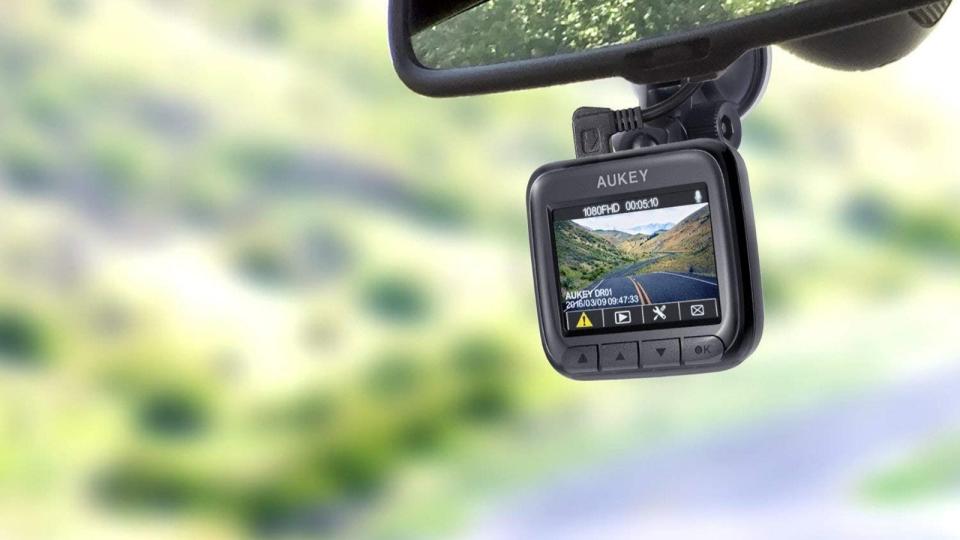
The Aukey DR01 is an inexpensive dash cam that captures 1080p video with a wide, 170-degree field of view. The quality of footage you’ll get from this device is middling, at best, but it should be adequate for insurance reporting under most circumstances. That said, we’re unable to recommend it for a number of reasons.
During testing, we found that the DR01 refused to remain in place in the face of road vibration: its flimsy plastic mount wasn’t up to the job of securing in position. I had to readjust the camera’s orientation at least once every hour. This issue wasn’t helped along by the fact that all of the physical interface buttons for the camera are located along the bottom edge of the DR01’s fuzzy-looking two-inch display. Pushing one of the buttons, without using my other hand to hold the device in place, resulted in the camera tipping upwards without fail.
Get the Aukey DR01 from Amazon for $59.99
How We Tested
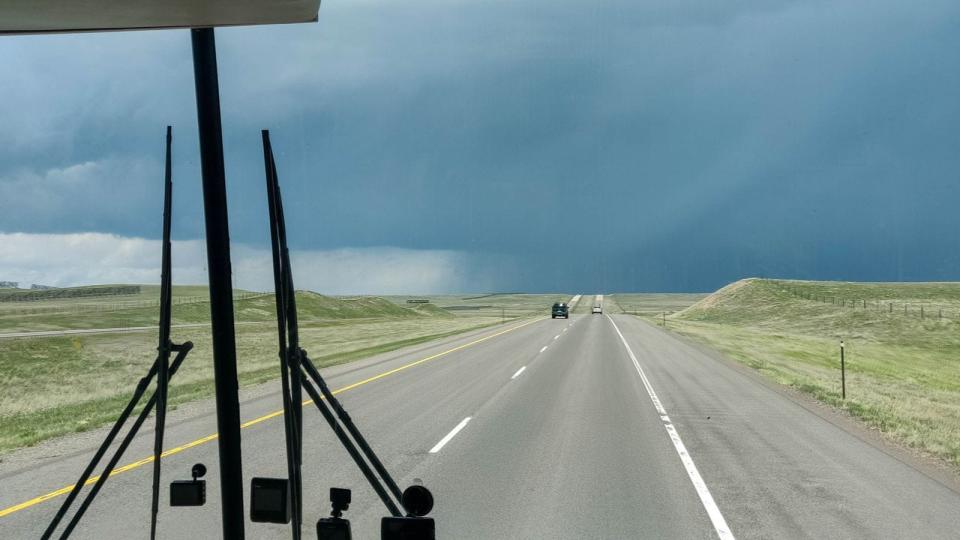
The Tester
My name’s Seamus Bellamy. I’m Reviewed’s Updates Editor and, handily for this guide, a full-time nomad. For the past four years, my wife and I have lived full-time in a 40-foot long motorhome, migrating between Canada, Texas, Mexico and back again in an effort to never see a flake of snow, ever again. It’s not a lifestyle for everyone, but we love it. Given my decade-long career as a tech journalist and editor, along with the amount of time that I spend on the road, I’m arguably one of the best individuals you could ever hope to find to test a product like dash cams.
The Tests
Entering the term “dash cam” in the search field of an online shopping site will land you thousands of results—that’s more cameras than I could hope to test in a lifetime. Before I could begin to fathom what to test, I had to narrow this field of hardware down considerably. So, I decided to keep things simple.
While there are dash cams that can monitor both the interior and exterior of your vehicle and camera systems designed to what’s in front of and behind your car, I decided to focus only on models that take forward-facing footage for several reasons. They’re easy enough to install that most people can do it themselves; they present less of an intrusion into the privacy of you and your passengers than devices with an inward-facing cameras can, and despite offering more video coverage of your vehicle, a forward-facing dash cam can still do its primary job well—capturing footage of any accident that you’re involved in. Next, having narrowed the field, I turned to a number of trusted online sources, such as Tom’s Guide, The Wirecutter, and New York Magazine to see what my colleagues had to say on the subject. A number of brands and devices kept coming up in their research—for better or worse. I took note of what writers at other publications liked and which dash cams they felt that folks should avoid. From here, I collected 10 of the top picks from my list of trusted websites and winnowed my group of dash cams down even further, leveraging user reviews, price and whether or not the dash cam in question was old enough that it might be replaced by a new model in the near future, as metrics. In the end, I was left with six different dash cams to test.
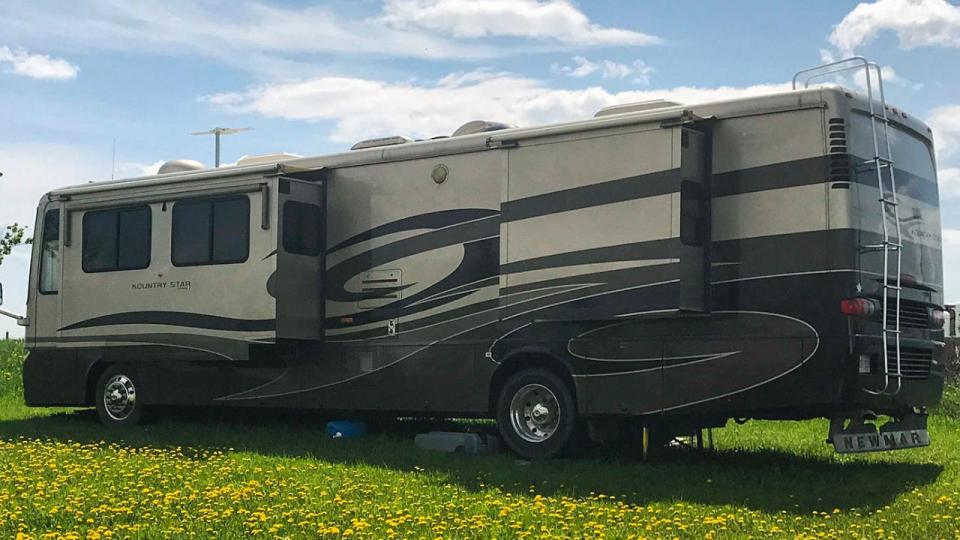
In order to test these six contenders, I set them up in the huge front window of our class A motorhome: a 40-foot long, 2004 Newmar KountryStar diesel pusher. As my wife wheeled our rig out of McAllen, Texas to start on the 2230 mile trek to Calgary Canada, I turned the cameras on and started testing. During our five-day drive, I looked for the following:
How easy it was to mount and remove the camera from my windshield
Whether the cameras would remain attached to the windshield for the duration of the trip
Whether road vibration would shift the focus of the cameras away from the points that I had fixed them upon
The quality of video captured during the day and in low-light driving conditions
Whether the camera recorded parking security footage while our vehicle was not in motion
The visibility of the camera’s display in all lighting conditions
How easy it is to review footage on the camera itself or, where applicable with a smartphone app or on a laptop
Some of the cameras in my test group came packing useful extras such as proximity alerts to warn of an impending collision, a driver alert system that randomly beeps loudly to keep one from nodding off behind the wheel, or lane departure warnings. For the right drivers, these tools could be incredibly useful—but they have the potential to be huge distractions or cause unneeded stress, too. Where such features existed, I made sure that they could easily be turned off. Along these same lines, as distracted driving has shown to be just as effective a killer as driving while intoxicated, I rated each dash cam on how well it faded into the background. I awarded higher marks to devices with easy-to-use user interfaces; that needed to be physically adjusted less often. If I forgot that it was even there until it was time to review my video footage, I considered it a win.
Finally, after reviewing all six dash cams together, I did a second round of objective testing on my top performers, just to be sure that I hadn’t missed anything. For this second round of tests, the finalists were mounted in my Jeep and taken on a four-hour drive.
What You Should Know About Dash Cams
Is a dash cam right for you? It's not necessarily a simple question. Here's what you need to know.
Why Own a Dash Cam?
The most obvious reason to invest in a dash cam is that it acts as an impartial witness to your travels. If you're involved in a car accident that wasn't your fault, having this kind of video footage that proves you weren't to blame could keep your insurance rates from rising, save you thousands of dollars in the event of a civil suit, or possibly even keep you out of jail.
Depending on the model of dash cam you buy, the hardware may be capable of monitoring your vehicle while it's parked, too. So, should someone back their mini-van into your car while you're in the grocery store picking up some milk, you'll have a record of what happened, waiting for you when you come out.
Finally, if you love creating videos of your travels to share online, a high-definition dash cam is a great way to record a road trip. Some, like the Garmin 65W, even come packing the ability to create time-lapse videos of your journey.
What About Rear-Facing Cameras?
It's possible to get your hands on dash cams that come with a secondary camera that peers in on you and your passengers, as well as ones that come in a kit with a second camera that's designed to be mounted in your vehicle's rear end. If you're looking for the best rear camera, we may address these devices in their own guide at a later date. However, for simplicity's sake, we wanted to stick to forward-facing cameras for this guide.
A forward-facing dash cam can be installed in minutes, by just about anyone. That's not the case with camera systems designed to cover both the front and the rear end of a vehicle. Installing an aftermarket back-facing camera often requires a higher level of technical skill than many folks have, or may necessitate a trip to a specialist to have it installed correctly. We prefer not to recommend products that people can't pick up and start using on their own, right out of the box. What's more, chances are, a forward-facing camera will be all you need to cover your bases, from an insurance point of view.
While a forward-facing camera won't collect footage of a car slamming into you from behind, many dash cams now come with features like GPS logging and accelerometers. This makes it possible to record your vehicle’s speed of travel and, in many cases, register an impact. With the other evidence collected during a police or insurance investigation, if you weren’t to blame for an accident, the video your dashcam captured could be enough to get you off the hook.
The product experts at Reviewed have all your shopping needs covered. Follow Reviewed on Facebook, Twitter, and Instagram for the latest deals, reviews, and more.
Prices were accurate at the time this article was published but may change over time.
This article originally appeared on Reviewed.com: The best dash cams of 2019

